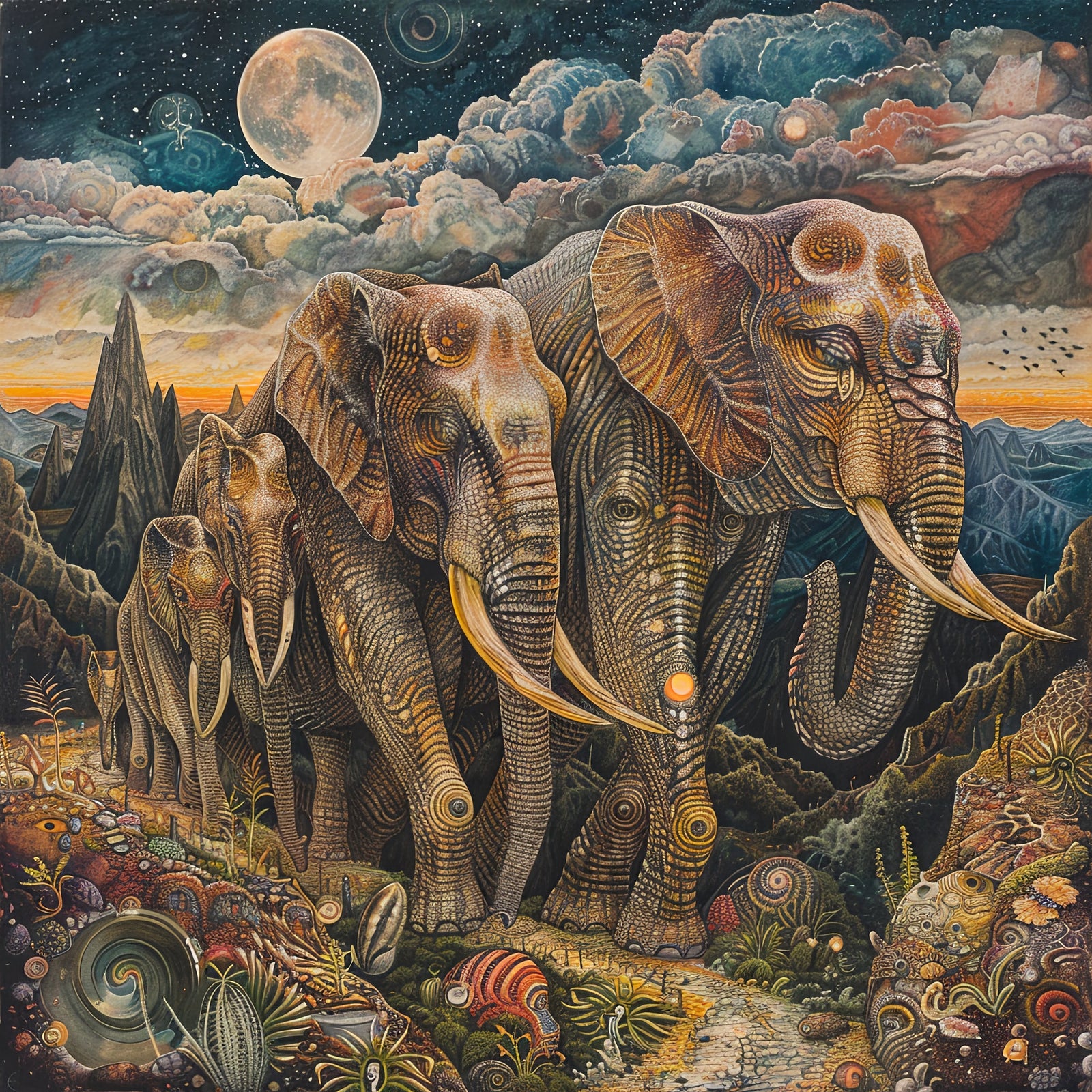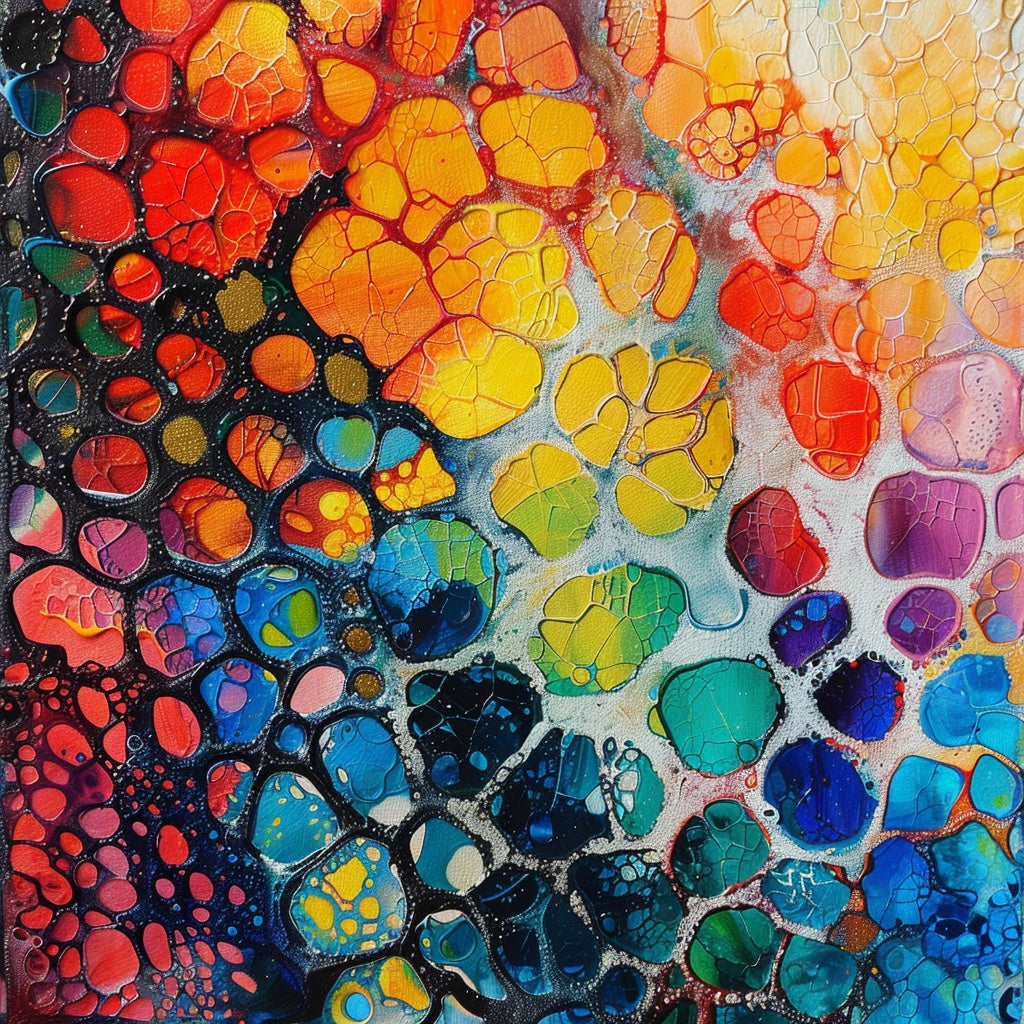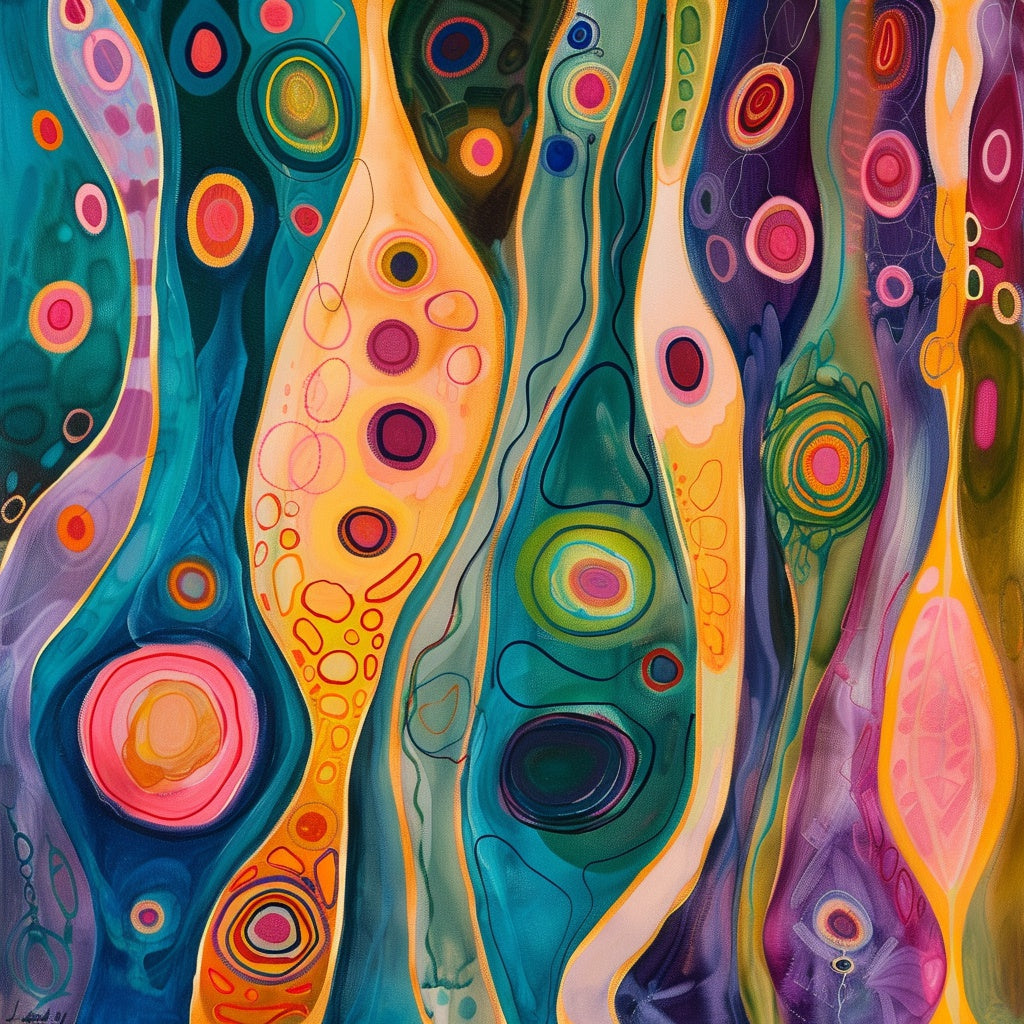AI Art: Navigating the Legal and Cultural Landscape
The rise of artificial intelligence (AI) has ushered in a new era of artistic creation, where algorithms can produce images that rival and even surpass the works of human artists. This novel form of creative expression has sparked a fervent debate about the legal boundaries and cultural implications. This article explores the intersection of AI, art, and law, examining the challenges and opportunities of this rapidly evolving field.
Table of Contents
- Copyright and Ownership of AI-Generated Art
- Legal Implications of AI-Generated Art
- Cultural Implications of AI-Generated Art
- Benefits and Drawbacks of AI-Generated Art
- Protecting AI-Generated Art
Copyright and Ownership of AI-Generated Art
One of the most pressing legal questions surrounding AI art is that of copyright and ownership. Under current U.S. law, copyright protection hinges on the principle of human authorship. Since AI systems are not legal entities, they cannot hold copyrights. This raises the critical question of who owns the rights to AI-generated artwork.
Potential Claimants to Ownership
Several potential contenders for ownership exist, each with their own arguments:
- The AI tool user: The individual who provides the creative prompt and guides the AI in generating the artwork. Some argue they provide the initial creative spark and refine the AI's output. However, they do not directly create the artwork, and their control over the final output can vary significantly.
- The AI tool developer: The company or individual who creates the AI software used to generate the artwork. They develop the underlying technology and algorithms. However, they typically do not intend to be the author of the generated art; their primary role is as tool creators.
- The AI tool itself: The AI system that executes the process of generating the artwork. The entity directly produces the artwork based on the input and guidance provided. However, it lacks the legal capacity to hold copyright.
This ambiguity has fueled debate in legal and artistic communities. Some legal scholars argue that the user should be granted ownership, as they provide the initial creative impetus and often refine the AI's output. Others suggest that AI-generated art should fall into the public domain and be freely available for anyone to use and build upon.
Adding to this complexity is the precedent set by the "monkey selfie" case, Naruto v. Slater. The U.S. Court of Appeals for the Ninth Circuit ruled that a monkey could not own the copyright to a photograph it took of itself. This case highlights the legal challenges of granting copyright to non-human creators, including AI systems.
International Perspectives and the U.S. Copyright Office
International perspectives on AI copyright vary significantly. While the U.S. denies copyright protection to AI-generated works, other countries, such as the U.K., have explored granting limited copyright to AI developers or users under certain conditions. This divergence underscores the need for international cooperation and harmonization of copyright laws in the age of AI.
The U.S. Copyright Office has adopted a cautious approach, stating that AI-generated works are not copyrightable unless there is sufficient human authorship involved. If a human artist significantly modifies or arranges AI-generated elements, they may be able to claim copyright for those specific contributions. However, the AI-generated content itself remains unprotected.
This lack of clear ownership poses challenges for artists, developers, and the art market. Without copyright protection, preventing unauthorized use and commercial exploitation of AI-generated art becomes difficult. This uncertainty may stifle innovation and discourage investment in this emerging field.
Legal Implications of AI-Generated Art
Beyond copyright, AI art raises other legal implications. One key concern is the potential for AI systems to infringe on existing copyrights. AI art generators are trained on massive datasets of images, many of which may be protected by copyright. This raises the question of whether using copyrighted works to train AI models constitutes infringement.
Fair Use vs. Copyright Infringement
Some argue that this use falls under the fair use doctrine, as it transforms the original works into something new. Others contend that the sheer volume of copyrighted material used in AI training goes beyond fair use and requires licensing or permission from copyright holders.
The case of Andersen v. Stability AI is a landmark case that challenges the use of copyrighted works to train AI image generators. The outcome of this and other cases will have significant implications for the development and regulation of AI art.
The legal landscape surrounding AI art is still evolving, with ongoing lawsuits and policy discussions shaping its future. Existing copyright laws, designed for a world where human creativity was the sole source of artistic expression, may not adequately address the unique challenges posed by AI-generated content.
Cultural Implications of AI-Generated Art
Beyond legal considerations, AI art has profound cultural implications. It challenges traditional notions of creativity, authorship, and the role of art in society.
Democratization of Creativity vs. Devaluation of Human Talent
Some argue that AI art democratizes creativity, making it accessible to anyone with a computer. This accessibility can empower individuals and communities to engage with art creation in previously unimaginable ways.
However, others express concerns about the potential for AI to devalue human artistic talent and lead to job displacement. The fear is that as AI becomes more sophisticated, it may diminish the demand for human artists, leading to economic hardship and a loss of creative livelihoods.
The impact of AI art on human artists is a complex issue. While some artists fear AI will replace them, others see it as a new tool to enhance creativity. AI can assist artists with generating ideas, exploring different styles, and automating repetitive processes. This collaboration between human and machine has the potential to unlock new artistic possibilities and redefine the creative process.
However, there are also concerns that AI art may lack the emotional depth and personal touch of human-created art. This raises questions about the authenticity and value of AI-generated art and whether it can truly capture the nuances of human experience and emotion.
Redefining Art and Authorship
AI art challenges our perception of art itself. If a machine can create art indistinguishable from human-made art, what does this mean for the definition of art and the artist's role? Does it diminish the value of human creativity, or does it expand our understanding of what it means to be creative?
The increasing integration of AI in art creation has led to a blurring of lines between human and machine contributions. This raises questions about artistic identity and the expression of uniqueness in the age of AI. How can artists maintain their creative voices when AI can readily mimic and replicate human styles?
AI art also raises questions about the future of art and creativity. Will AI lead to the creation of entirely new art forms that transcend human imagination? Or will it ultimately remain a reflection of human creativity, limited by the data and algorithms that guide its creation?
AI Art's Impact on Cultural Narratives and Perceptions
Beyond its impact on individual artists, AI has the potential to reshape cultural narratives and the way we tell stories. AI can create interactive and immersive narratives where the story adapts to the user's choices and preferences. This could lead to new genres and storytelling techniques that blend human creativity with algorithmic efficiency.
However, there are also concerns that AI-driven narratives could lead to a homogenization of stories, potentially perpetuating biases and limiting cultural diversity. If AI algorithms are primarily trained on dominant cultural narratives, they may inadvertently reinforce existing stereotypes and marginalize underrepresented voices.
AI art challenges our perception of art itself, raising questions about the nature of creativity, originality, and the value of art. Studies have shown that people often perceive AI-generated art as less creative and valuable than human-made art, even when the works are visually indistinguishable. This suggests a bias against AI art, rooted in the belief that creativity is a uniquely human attribute. However, there is also evidence that people can appreciate the aesthetic qualities of AI art and recognize the creative potential of this technology.
Benefits and Drawbacks of AI-Generated Art
AI-generated art offers several potential benefits and drawbacks:
Potential Benefits
- Accessibility: AI art tools can empower individuals with limited artistic skills to create impressive visuals. This democratization of art can open up new avenues for creative expression and make art more accessible to a wider audience.
- Versatility: AI algorithms can generate art in a wide range of styles and mediums, allowing for greater creative exploration. Artists can use AI to experiment with different techniques, combine styles, and push the boundaries of traditional art forms.
- Efficiency: AI can automate tedious tasks, freeing up artists to focus on higher-level creative decisions. This can streamline the artistic process and allow artists to be more productive.
- Innovation: AI can generate novel and unexpected artistic expressions, pushing the boundaries of traditional art forms. This can lead to the creation of entirely new artistic styles and aesthetics.
- Authentication: AI can be used to analyze and verify the authenticity of artworks, helping to combat art forgery and protect cultural heritage.
Potential Drawbacks
- Lack of emotional depth: AI art may lack the emotional resonance and personal connection of human-created art. This can make it difficult for AI art to evoke the same level of emotional response as human-made art.
- Copyright issues: The use of copyrighted material in AI training raises legal and ethical concerns. It is important to ensure that AI art generators do not infringe on the rights of copyright holders.
- Ownership ambiguity: The lack of clear ownership for AI-generated art creates challenges for artists and the art market. This uncertainty can hinder the commercialization and distribution of AI art.
- Authenticity concerns: The reliance on algorithms and datasets raises questions about the originality and authenticity of AI art. It is important to distinguish between AI art that is truly original and AI art that merely imitates existing styles.
Protecting AI-Generated Art
In the absence of complete copyright protection for AI-generated art, artists can take steps to protect their creations and prevent unauthorized use. Some practical tips include:
- Watermarking: Adding a visible or invisible watermark to the artwork to identify the creator.
- Opting out of datasets: Requesting that AI art generators do not include their artwork in their training datasets.
- Safe online sharing: Sharing artwork on platforms that offer copyright protection or allow creators to control how their work is used.
- Digital signatures: Using digital signatures to verify the authenticity of the artwork.
Conclusion
The rise of AI artistry presents a complex interplay of legal and cultural considerations. While AI has the potential to democratize creativity and push the boundaries of artistic expression, it also raises concerns about copyright infringement, ownership disputes, and the impact on human artists. The legal landscape surrounding AI art is still in its early stages, with ongoing lawsuits and policy discussions shaping its future.
Culturally, AI art challenges our understanding of creativity, authorship, and the role of art in society. It is essential to engage in thoughtful discussions about the implications of this technology and its impact on human artists and the art world. It is crucial to develop a balanced approach that fosters AI innovation while clarifying copyright laws, supporting human artists, and fostering dialogue and collaboration. By navigating these complexities with care and foresight, we can harness the transformative potential of AI artistry while preserving the integrity of human creativity and the art world.
Footnotes
- What Is an "Author"?-Copyright Authorship of AI Art Through a Philosophical Lens
- A.I. Art Generated With Text Prompts Cannot Be Copyrighted, U.S. Rules
- houstonlawreview.org
- AI Art Copyright: Legal Issues & Ownership Explained - Magic Studio
- Who Owns Artificial Intelligence-Created Art? The Copyright - Sybaris Collection
- Copyright Ownership of Generative AI Outputs Varies Around the World - Cooley LLP
- AI, the Law, and Copyright - Artificial Intelligence and Images - Research Guides
- Can You Copyright AI Art: Legal Insights | ScoreDetect Blog
- Andersen v. Stability AI: The Landmark Case Unpacking the Copyright Risks of AI Image Generators - NYU Journal of Intellectual Property & Entertainment Law
- Artists' Rights in the Age of Generative AI | GJIA
- Impact Of AI On Cultural Narratives - Raindance Film Festival
- The Cultural Impact of AI: Shaping Society and Identity | by Megasis Network | Medium
- Policy Reflections: AI-Generated Art Implications
- AI-Generated Art: How Can Visual Artists Navigate This New Frontier of Creativity?
- www.digitalbrew.com
- Knowing an artwork is AI-generated: how we value creativity - Rotterdam School of Management, Erasmus University
- The Ethical Implications of AI on Creative Professionals | by Dirk Steynberg - Medium
- Cultural Impact and Acceptance of AI-Generated Art: A Reflection of Our Evolving Relationship with Technology | Richard Foster Fletcher
- When Machines Mimic, but Don't Create: Why AI “Art” Isn't True Art
- AI Art: Exploring the Pros, Cons, and Ethical Dimensions - Vision Factory
- The Benefits & Downfalls of AI and Art: Faculty Blog by Aaron Winey - Grace College
- Perception of AI Art - ARISA Foundation
- Cultural Impact Of AI Art Generators and Artificial Intelligence - Airbrush



Leave a comment (all fields required)